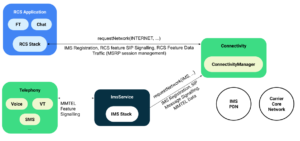Identity management is a process for verifying and authenticating users. It also monitors access levels and privileges. It can be implemented to provide self-service capabilities to end users. Ultimately, identity management software acts as a centralized directory service that manages access to a network.
Process of Validating and Authorizing Users
Identity management is essential in protecting a business’s information and assets from cyberattacks. The process of authenticating and verifying users and controlling their access to systems and information is known as identity management. It includes onboarding new users, authorizing system permissions for existing users, and offboarding users who no longer need access.
Identity management is a complex system that manages attributes about users, devices, and network entities. It protects an individual’s identity through digital identity technologies such as passwords, multi-factor authentication, single sign-on, and biometrics. It also tracks and controls access to all digital assets, including devices, network equipment, portals, content, and self-service.
Identity management processes enable employees to access the resources they need and minimize security risks. They also take into account changes in roles and users. Identity and access management cannot be separated as organizations modernize hybrid multi-cloud environments using a zero-trust strategy. The cloud identity management solutions that use deep, AI-powered context to automate risk protection and continuously authenticate any user to any resource are required in a cloud environment.
Monitors Access Levels and Privileges
Identity management is a process of establishing and monitoring access levels and privileges for users. It helps organizations maintain control over access to company resources by enforcing policies and granting appropriate requests to the right users. Identity management tools allow IT teams to assign user access based on their roles and teams. They help companies set up role-based access controls and save time by automatically granting access to users.
With thousands of identities accessing sensitive digital assets, identity management is essential. Identity management software monitors access and privilege levels to ensure users have the correct permissions to access information. It helps organizations keep track of employees’ access levels and provide that only those with a legitimate user account access sensitive information. Unfortunately, malicious hackers are well aware of the methods used by IT to protect its assets, and they use their knowledge to devise new exploits to steal sensitive data.
Provides Self-Service Capabilities For End-Users
Identity management software is a software solution that helps you manage and maintain user identities and credentials. It also enables you to simplify reporting and auditing. By providing end-users with self-service capabilities, identity management software can help you increase productivity and lower IT costs. Here are some features of identity management software:
Flexible data model: An IDaaS solution supports a flexible data model for user entitlements, including the user’s location and device type. It also promotes closed-loop reporting and provides multiple features such as multi-tenancy and multi-factor authentication. It can also handle various source locations, including cloud-based directory services.
High-level functionality: Some solutions also have self-service capabilities that enable end-users to manage their own accounts and profiles. These capabilities may be crucial for businesses that want to avoid a costly breach. For example, some solutions offer advanced monitoring of recent security breaches, monitoring credentials being sold on the internet, and monitoring simultaneous logins from around the world. Others incorporate machine learning and advanced analytics to increase security.
Centralized Directory Service
An Identity management software (IMS) is a centralized directory service that stores information about users and groups. A directory entry is stored in a standard text format called LDIF, which contains information about an object in the form of attributes and values. The LDIF file also includes an object class attribute that specifies the type of entry and some other qualities that describe specific traits of the entrance.
Identity management software is frequently used in conjunction with a centralized directory service to provide a single point of administration for managing users and groups. Using a single centralized directory service reduces the number of directories and eliminates redundant data. It is also beneficial in large enterprises and organizations that provide linked services.
Uses Multi-Factor Authentication
Multi-factor authentication, or MFA, aids in the prevention of hackers gaining access to your customer accounts. It requires additional information to confirm a person’s identity and is often used by financial institutions and businesses that process sensitive financial information. MFA is also useful for apps that offer shopping carts or direct purchases.
Multi-factor authentication requires two or more identity credentials to verify a user’s identity. This method increases security because the risk of cyber attacks is reduced. For instance, when using online banking, it’s essential to ensure that a user is not using a stolen card or a fake identity.
Multi-factor authentication requires the user to submit their credentials and verify their identity using a secondary device or SMS. It may also include biometric scanning hardware or a security question pre-arranged with the user. These security layers protect both the user and the organization from any cyber-attacks.






More Stories
How to Effectively Remove ChocoEukor from Your Android Device
From Pixels to Perfection: Mastering the Art of Web Design
How to Stop TinyTask: 10 Effective Techniques for Gamers and Tech Enthusiasts